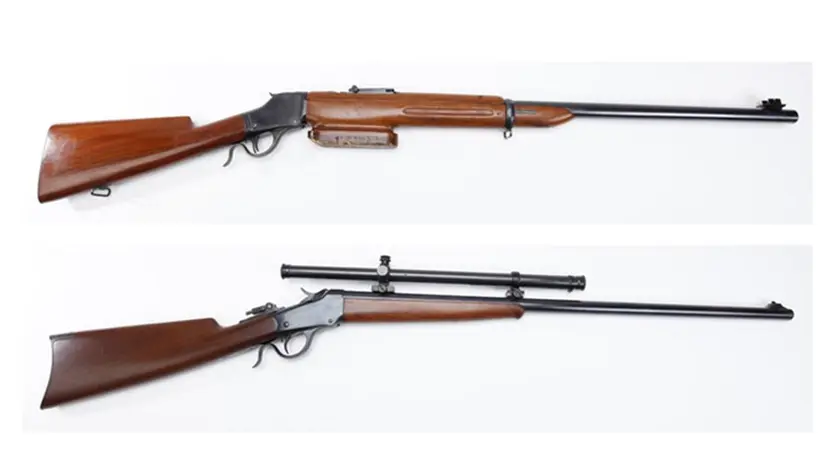The NRA American Rifleman looks back at the great Model 1885 single shot rifle.
The NRA American Rifleman looks back at the great Model 1885 single shot rifle.
The hand’s down choice for the title of the world’s greatest firearms designer, of all time, working in any era, and of any nationality, would have to go to American John M. Browning. Before anyone throws a fit and says the guy’s ancient history, let’s look at the objective facts. Face it, the guy had more that 125 patents to his name, and he designed everything from little single-shot rimfires to automatic 37mm aircraft cannons.
During his most productive years, from the late 1870s right up to his untimely death in 1926, he designed just about everything that went bang or boom for a global market. If you served in the US Military between the years 1895 and…well…today, you’ve probably been issued something (or at least exposed to something) designed by Mr. Browning. ‘Nuf said.
Not everyone knows that the gun design that first put John M. Browning’s name on the scoreboard was also the object of his first patent. It was in the late 1870s, and the big-bore single shot rifle was at the top of the firearm food chain.
While working for his father, who was also a pioneering gunsmith, the younger Browning created a simple, robust and highly accurate rifle design with a dropping breechblock and a self-cocking hammer positioned in the same axis as the bore, rather than being side-mounted like on the Sharps. Soon he began building his new rifle, by hand, with his three brothers in his father’s Ogden, Utah gunshop.
As noted gunwriter Dave Campbell observes in his recent NRA American Rifleman article, “Between 1880 and 1883 the Browning brothers manufactured some 600 of these rifles.”
“Long-range target shooting was the sport of the day by the early 1880s, and the rifle caught the attention of Thomas G. Bennett, vice president and general manager of the Winchester Repeating Arms Company,” Campbell continues. “Bennett made the trip to Ogden in 1883 and bought the rights to Browning’s rifle, thus inaugurating a longstanding relationship between Browning and Winchester Repeating Arms.”
In fact, it was a highly profitable and productive working relationship, one that would last for the next two decades.
“During the following two years engineers at Winchester designed and implemented a few improvements and variations to Browning’s rifle,” explains Campbell. “Initially two variations which became known as the High Wall and Low Wall were developed.”
The “High Wall” was the big dog of the pair. Able to handle the most powerful cartridges of the day, it was, and remains, one of the most popular and accurate single shots ever produced. Over the decades, it’s been chambered in everything from the handy 22 rimfires to potent modern express rounds capable of dropping a Cape Buffalo in its tracks.
Its more diminutive twin was called (wait for it) the “Low Wall,” due to the shallower receiver sidewalls when viewed in profile. This action is intended for rimfires and lower pressure centerfire pistol cartridges, a role in which it truly excels.
“A single-shot rifle isn’t really much of a handicap for most, and it offers a few advantages over modern repeaters,” continues Campbell. “The primary advantage is a similar overall length with a longer barrel. Too, many one-shooters are a bit lighter and thus easier to pack around than their repeating counterparts.
“The Model 1885 is a prime example of why many of us old fogeys still revere old John Moses Browning,” Campbell concludes. “More than 130 years after its introduction the rifle is still being made and used by savvy shooters and hunters.”
We suggest you read Campbell’s full article on the Model 1885 at americanrifleman.org.
Learn more about the Model 1885, including the current Low Wall offerings from Winchester Repeating Arms chambered in 22 LR, 22 WMR, 17 HMR and 17 WSM. It’s still one sweet shooting rifle.
Original article copyright American Rifleman magazine, 2016. Review copyright Winchester Repeating Arms, 2016. Review by Winchester Repeating Arms staff writer, Scott Engen.






